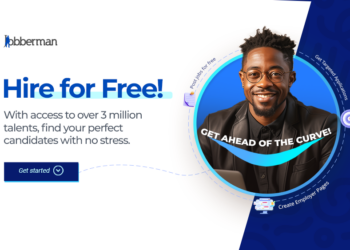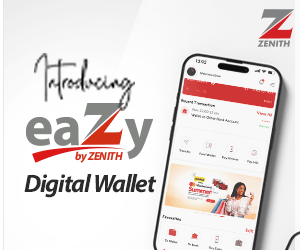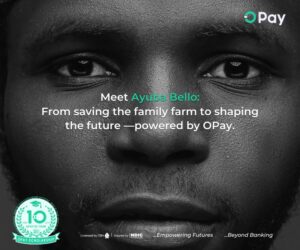“Please find my resignation notice attached” an email phrase dreaded by employers who have talented or loyal employees, without whom smooth workflow seems unimaginable.
To avoid being taken aback by an email with this nightmarish notification, it’s important to start uncovering a potential employee’s motivation already at the recruitment stage.
Alignment of core motivations and expectations are key indicators that hiring a new team member will result in a win-win long-term partnership both for the seeker and employer.
For job seekers, joining an organisation is a step on their path to career fulfilment. With a clear path for growth and processes that aid performance, it can motivate many to perform excellently beyond prescribed job descriptions.
Yet, understanding a seeker’s long-term career plan and the role different types of organisations play in it is critical for talent management and resource planning.
For example, if a potential employee is moving into the project manager position of a local SME but their ultimate ambition is to become the head of operations at a multinational corporation, one can immediately identify a future point of departure.
Where the SME organisation in question has no expansion plans in view, the seeker will unlikely stay long as an employee.
Or another scenario of mismatched expectations a seeker is eager to navigate the dynamic and often volatile startup culture, while the recruiting organisation is an established machine with well-oiled gears of routine processes unable to offer much flexibility and creativity.
The organisation and job seeker will certainly speak different expectation languages; the seeker will not match the employer’s long-term requirements for a process builder.
The seeker, similarly, will have no personal motivation to contribute to the utmost of their potential, either exhibiting a lackadaisical attitude or submitting a resignation notice not so long after employment.
For an employer who basically creates a strategic plan for 3-5 years, finding a “match made in heaven” is literally a matter of resource efficiency and overall organisational sustainability.
There is also typically an annual HR budget to spend on staff recruitment, adaptation and remuneration projected to compensate for the expenses as well as anticipated bonuses.
Without understanding what a seeker expects at different stages of their engagement and personal career plan, an employer practically pushes itself further up the VUCA (volatility, uncertainty, complexity and ambiguity) scale of organisational sustainability.
To avoid the prospect of laying off new hires or losing current employees and thus creating a human resource crisis, mutual employee-employer expectations need to be regularly assessed and acted upon.
According to the Digital Skills Gap Report by Jobberman Nigeria, 70% of Nigerian employers are not planning to let their team members go in the post-pandemic period. Employees, however, have a different point of view, with only 6% of women and 7% of men willing to stay with their current employer, confirmed by Jobberman`s Employee Satisfaction Report.
With the ongoing “japa” trend, under which the net 2022 migration has already exceeded 40,000 in Nigeria, a continuous compatibility assessment is a necessity dictated by reality.
An employer must take the initiative and work with employees` motivation from the recruitment stage. If not done proactively, organisations may get to a point where employees exit in droves due to unaligned expectations.
Until a compatibility testing system is in place, there is a persistent risk of losing new staff within months of an engagement or dealing with a revolving door of exits that are not adequately planned for.
This specific challenge of employer-employee expectation mismatch was one of the critical points of discussion raised by HR professionals and recruitment experts at an Employer Cocktail Dinner Jobberman hosted earlier in July 2023.
Experts now recognise that it is a challenge in resource planning when employees consider organisations to be a transit point on their emigration or career growth journey.
Unaware of the candidates` undisclosed motives, employers oftentimes include employees in their business sustainability strategies, and when the staff leave earlier than expected, the employer experiences preventable losses.
Compatibility Assessment Advice to Manage Mutual Expectations
To ensure a balance of employer-employee expectations, it is not enough to answer a couple of general questions about an employee’s plans during the first interview. Motivation is dynamic, and employers need to continuously assess it before, during and after the employment tenure.
Here are 5 actionable pieces of advice to help employers onboard and retain a team member who fits not only the seat but the strategic business plan by managing mutual expectations:
Be articulate about the career growth, income ceiling, personal development opportunities and working conditions in the job description
If the role gives room for promotion and remuneration is not fixed (for example, you are looking for a sales manager who will be able to earn a percentage from every secured deal), do indicate it.
This openness to disclose terms will encourage candidates who are seeking more competitive and performance-based engagement.
Whether you offer mentorship, pre-engagement internship or upskilling training for selected hires, it is important for candidates to know it too some expect practical training and deeper immersion before they move to their immediate responsibilities, as well as investment in their education throughout employment.
Same with the work mode if you operate a hybrid or remote system, and if they can work from abroad: be clear about it.
It will filter candidates who prefer more conservative work conditions and are unable/unwilling to work from anywhere but an office.
- Ask specific questions about motivation to work in your organisation during the interview
Instead of confusing a candidate with a complicated question about their plans for many years ahead (which is challenging in today’s uncertain world), inquire about their reasons for wanting to work specifically in your company.
For instance, you may ask: “How do you expect us to support your personal and professional aspirations?” or “In your opinion, what can our organisation offer you in terms of development?”.
Additionally, mention whether you are searching for a long-term team member or a temporary worker to confirm that your expected employment duration will not interfere with that of the candidate who may be on the lookout only for some experience.
Yet, make sure to let the candidate speak about themselves and formulate their expectations.
Incorporate a probation period for every new hire
In some cases, expectations do not match the reality even when discussed by all parties, and it is in the best interests of all to find it out early enough.
It may happen that the team member gets a more enticing offer soon after signing your contract, or they/you simply realise that there is no cultural or personality fit.
A probation period can last a few months when terms and conditions remain as stated in the contract, the employee is fully paid as regulated by the contract for the probation period, yet the exit procedure is simplified, and the employer can part ways with the new hire with minimum exit procedures.
It is important to understand that the rationale of a probation period is to check compatibility before raising expectations and investing more in each other, not to get free labour or money.
During a probation period, a new team member should have consultations with the managers, mentors and/or invited career consultants to make a better-informed final decision.
Ask new employees to design a professional growth plan
Once employed, a new team member should gain from available career opportunities.
Ask them to outline a growth roadmap with desirable skills to learn, promotions to obtain and likely transitions to make.
If they have a transition in view, what professional edge do they expect to have before they consider an exit or shifting to an organisation that can give more or something else?
To help them earn potential promotions, add to their roadmaps what value they should bring before the same is considered by the organisation.
In the event that you are unable to compensate for their skills acquisition with paid training, think about alternative variants, for example, allocating them monthly volunteer time when they can volunteer at various social impact organisations in the capacity that allows them to advance coveted competencies.
Every time you can not fulfil an employee`s aspirations with finance, either because of your capacity or their non-monetary motivation, bring more flexibility, learning alternatives or avenues to make an impact.
Conduct regular check-ups via employee motivation sessions
Motivation, spurred by life circumstances, is a pliable substance. Even a loyal, long-term employee can send you a notice letter any time, any day, especially if their needs have been unattended.
It is resource-saving to host periodic, semi-formal or informal “motivational talks” with team members led by the HR manager or directly a business owner.
The idea of employee motivation sessions is to hear first-hand about staff`s mental state, job satisfaction and personal life occurrences that may hold a disruptive potential to their performance.
To ensure a free flow of insights and ethical compliance, each motivation session should be personal the dedicated time will pay off as it is always less expensive to spend extra time on an onboarded employee rather than search for a new one.
It is a good idea to review the professional roadmaps of each employee during such sessions to understand what has already been achieved and what you are yet to align with your expectations.
Motivation sessions should be less formal than performance reviews, so employees will be able to comfortably share some of their priority shifts and personal life aspects that normally remain unheeded or obscure during official reviews
Conclusion
The balance of employer-employee expectations is one of the first layers of organisational sustainability.
The more resources are spent on employees which they don`t compensate for with their value, largely achieved through employment longevity, the less productive the entire organisation is.
To preserve the hard-earned HR pool and retain amicable relationships for possible modified engagements, employers are tasked to embrace a continuous compatibility assessment, course-corrected with time.
After all, people make up an organisation, and sustainability is unachievable without them.
About the author
Samantha Ifezulike is the Head of People & Culture at Jobberman Nigeria.






















Thank you Samantha.
Very informative.